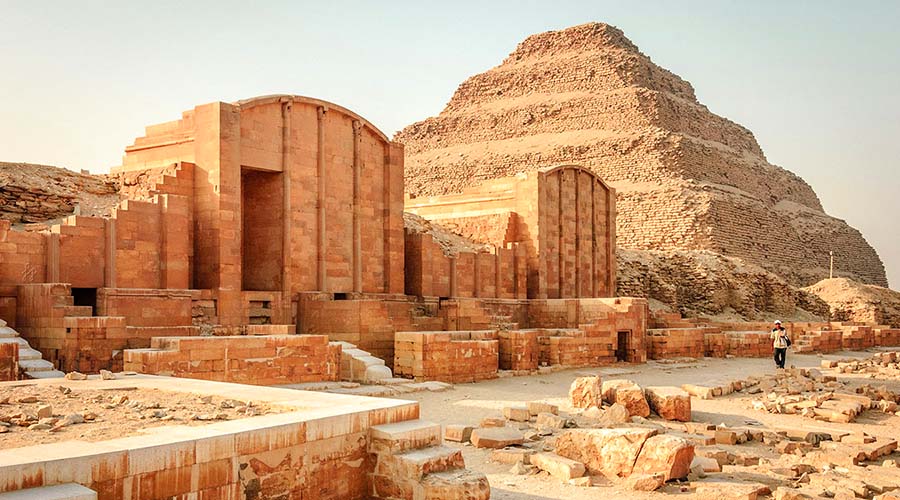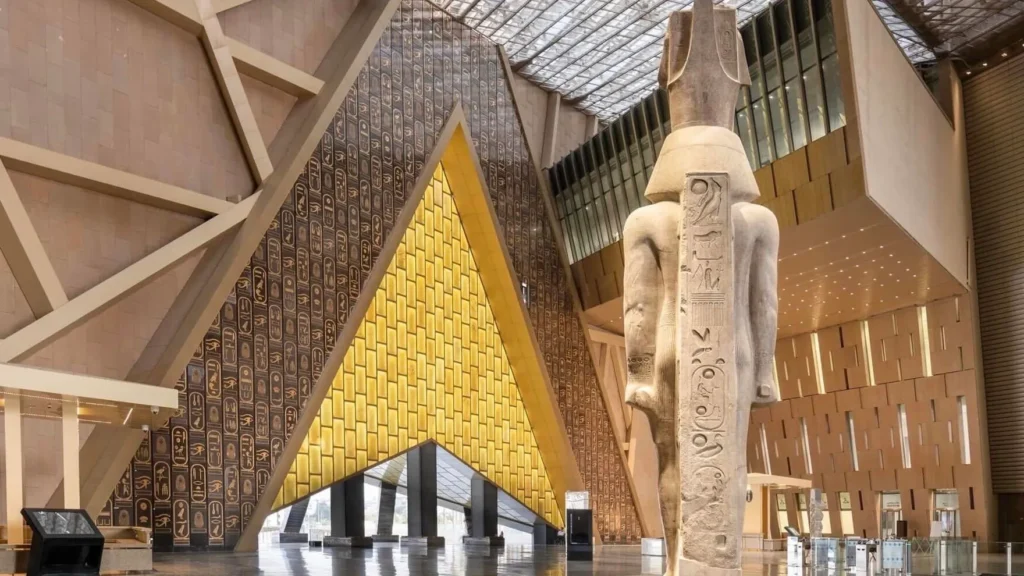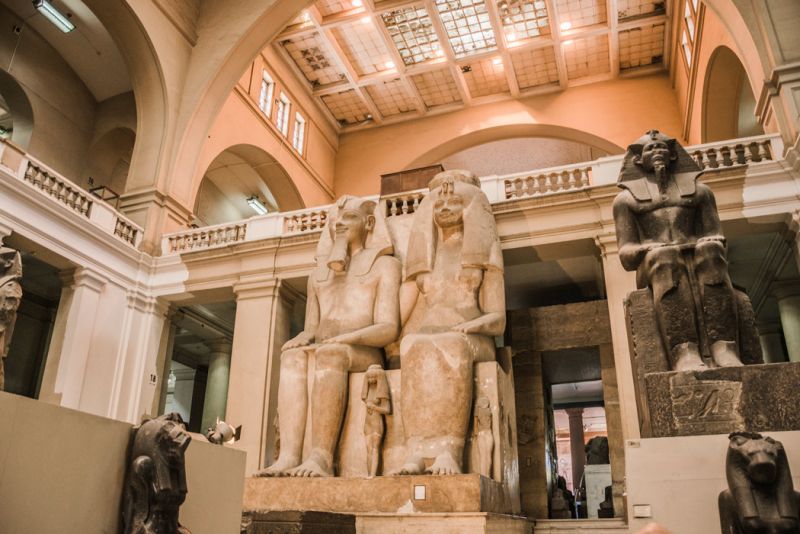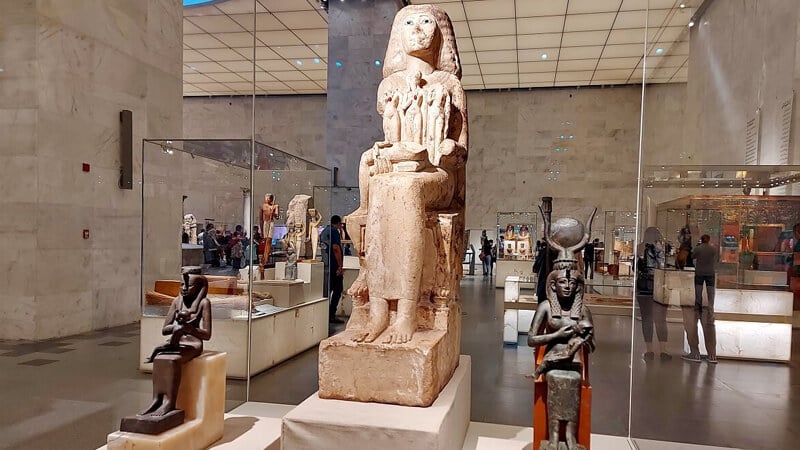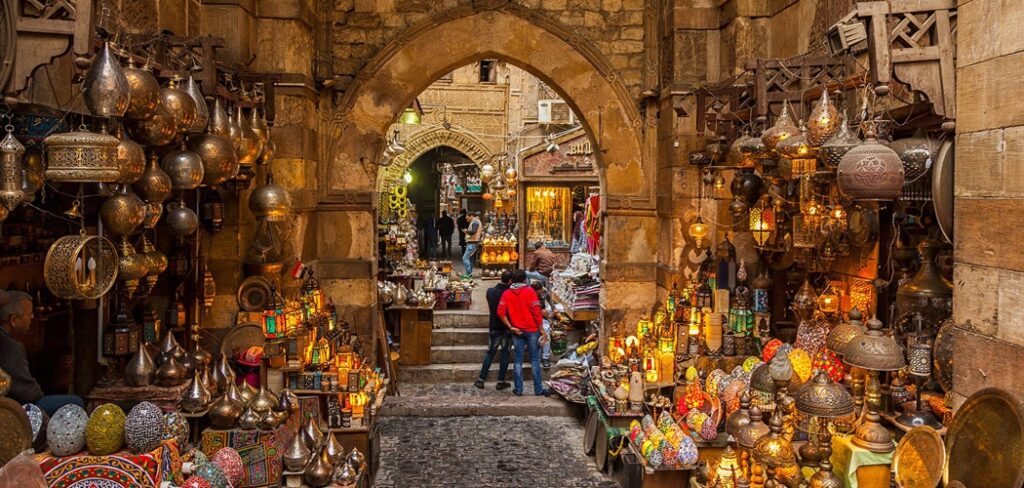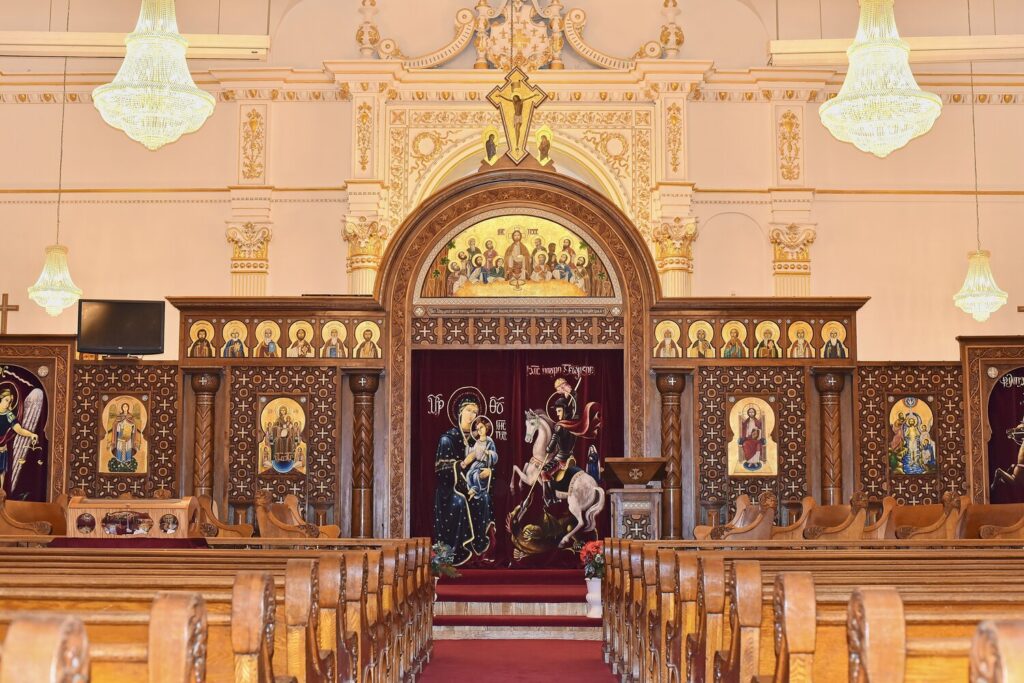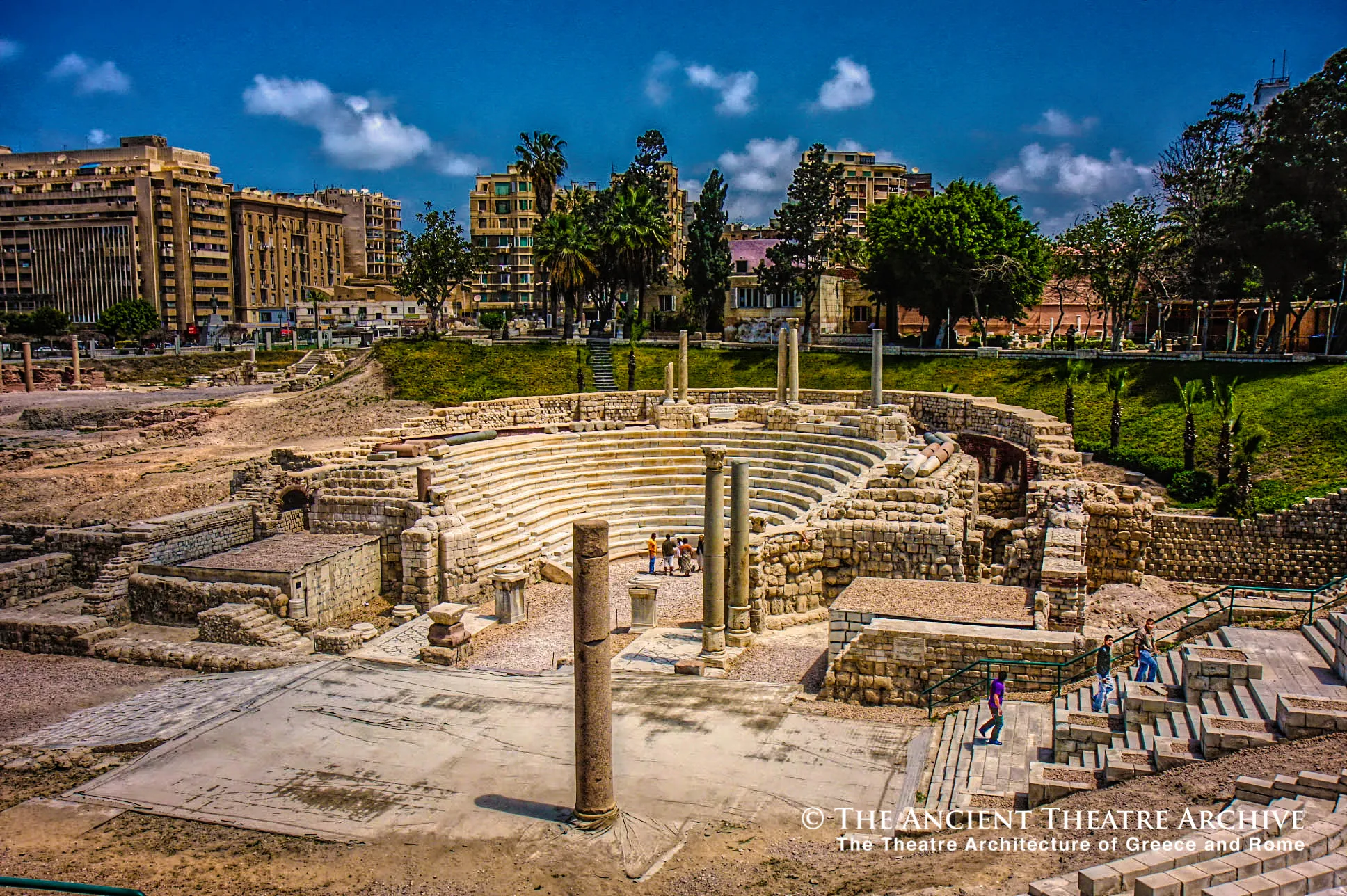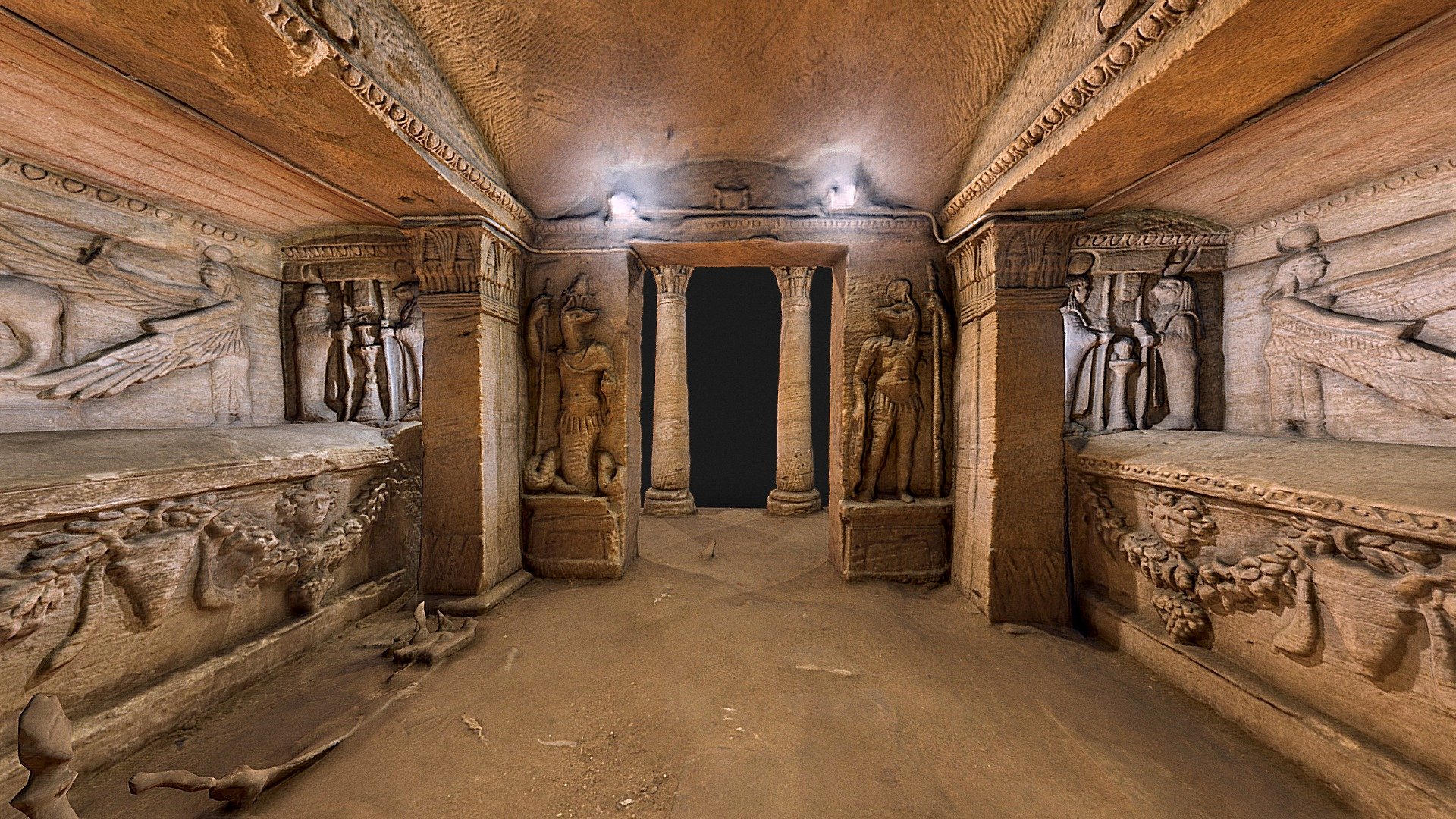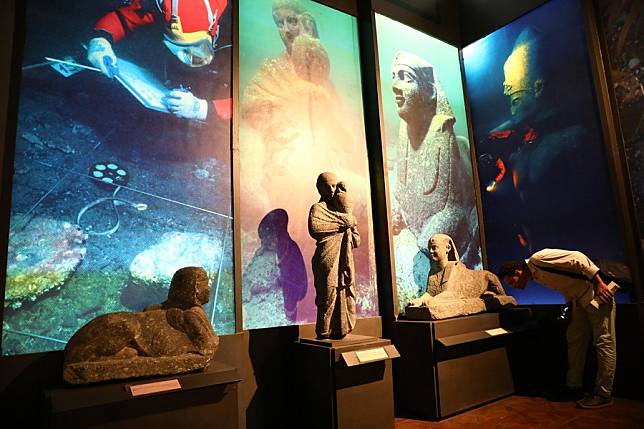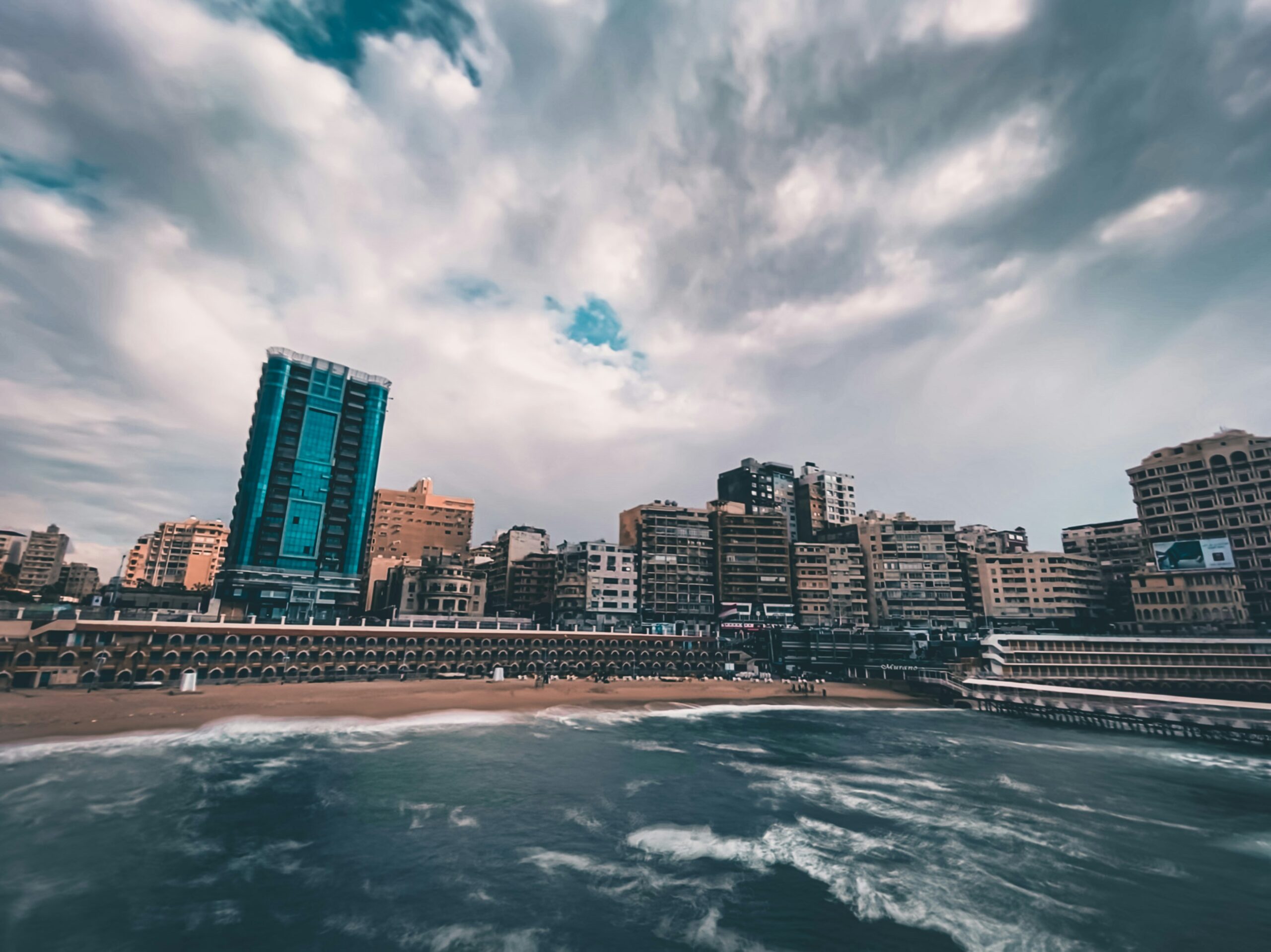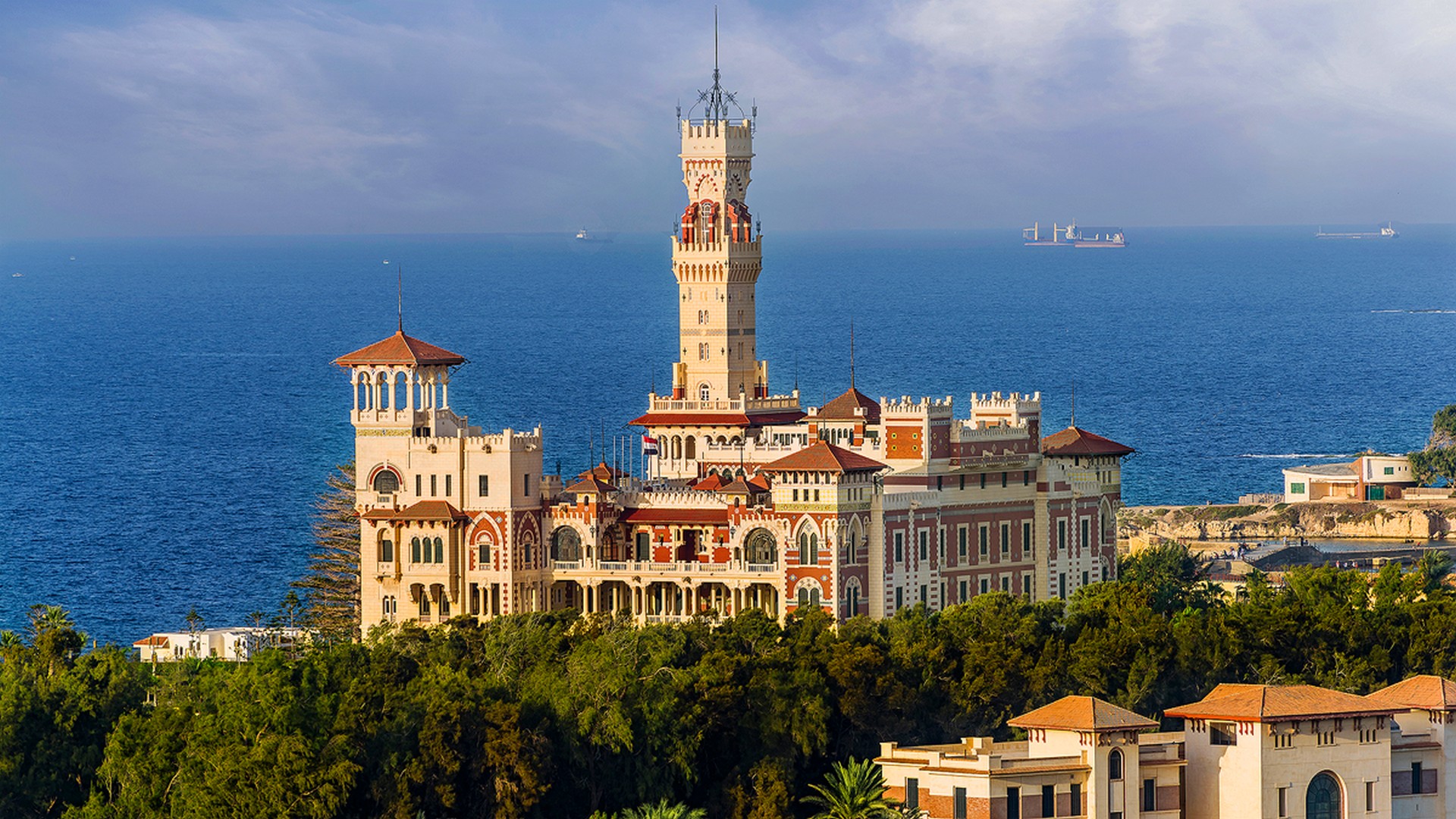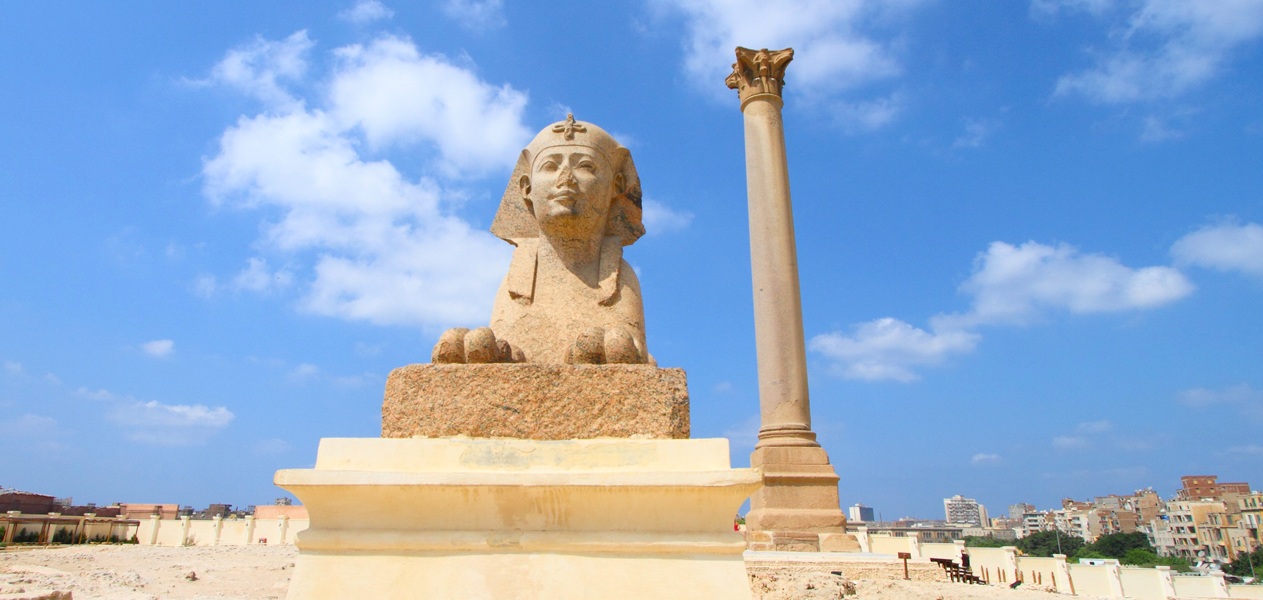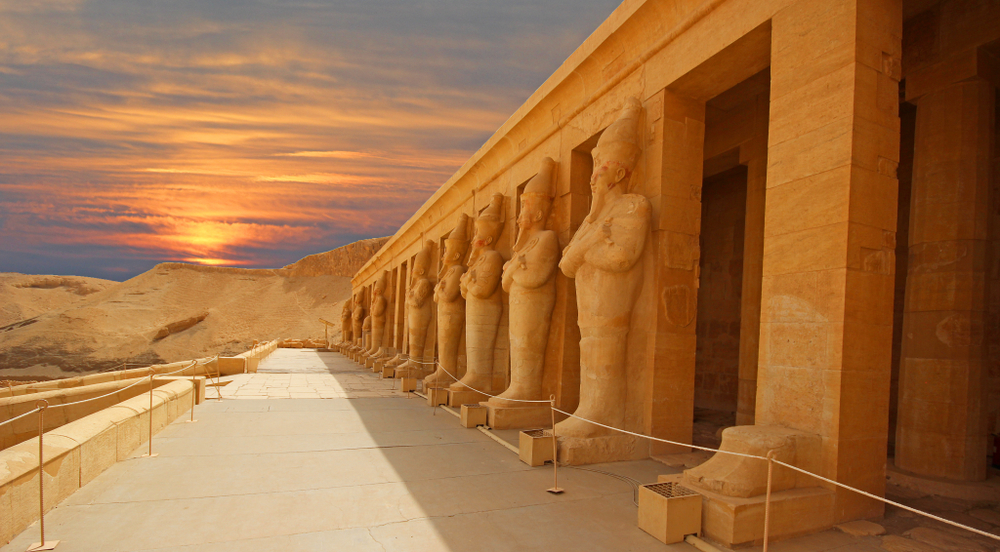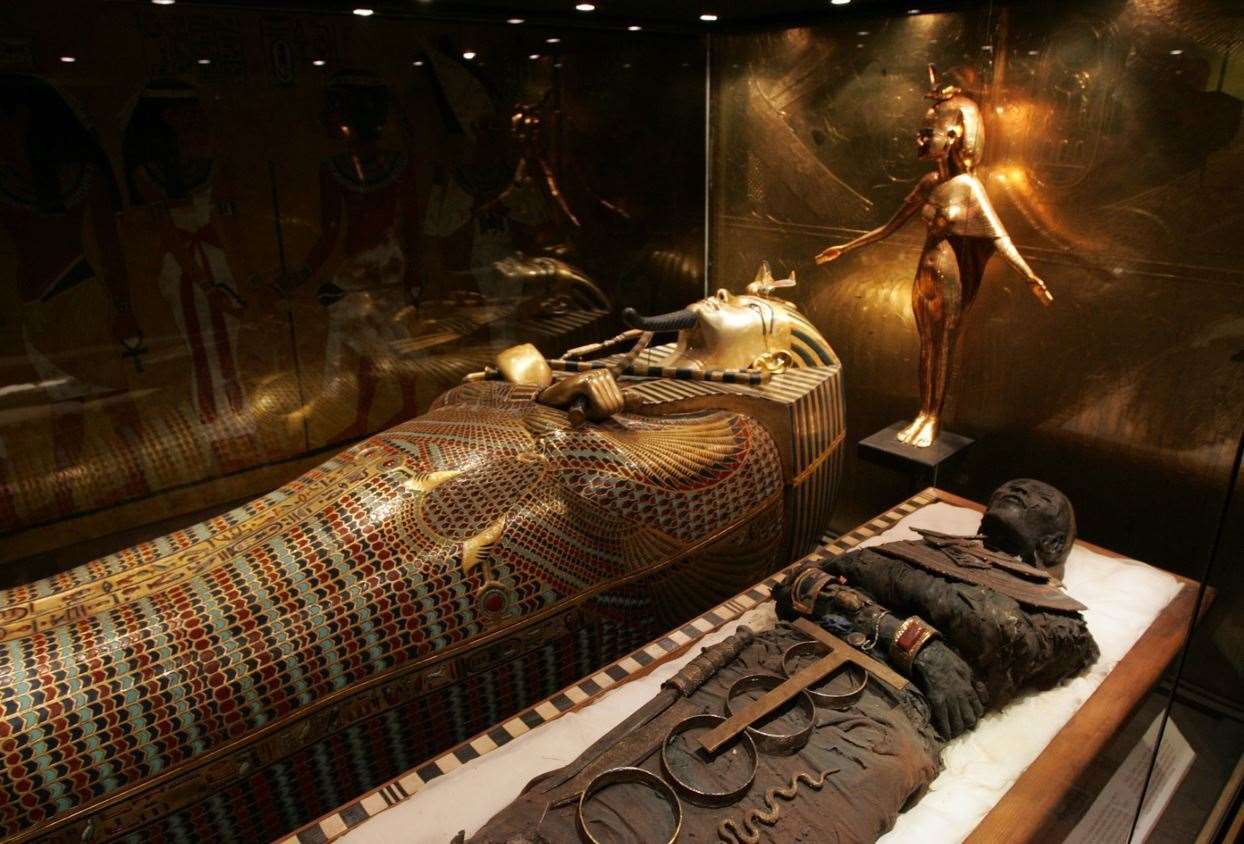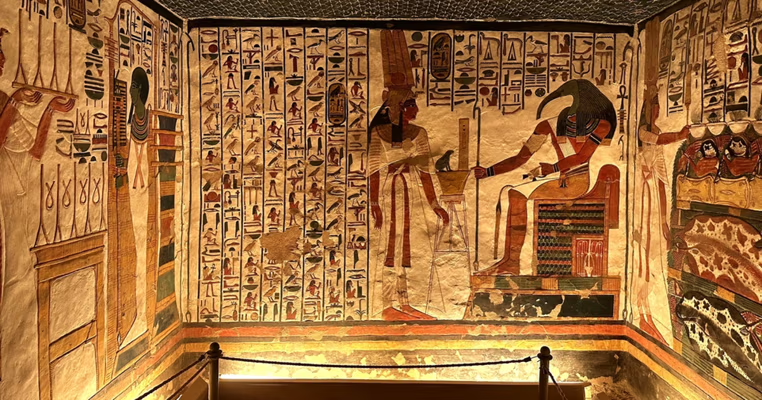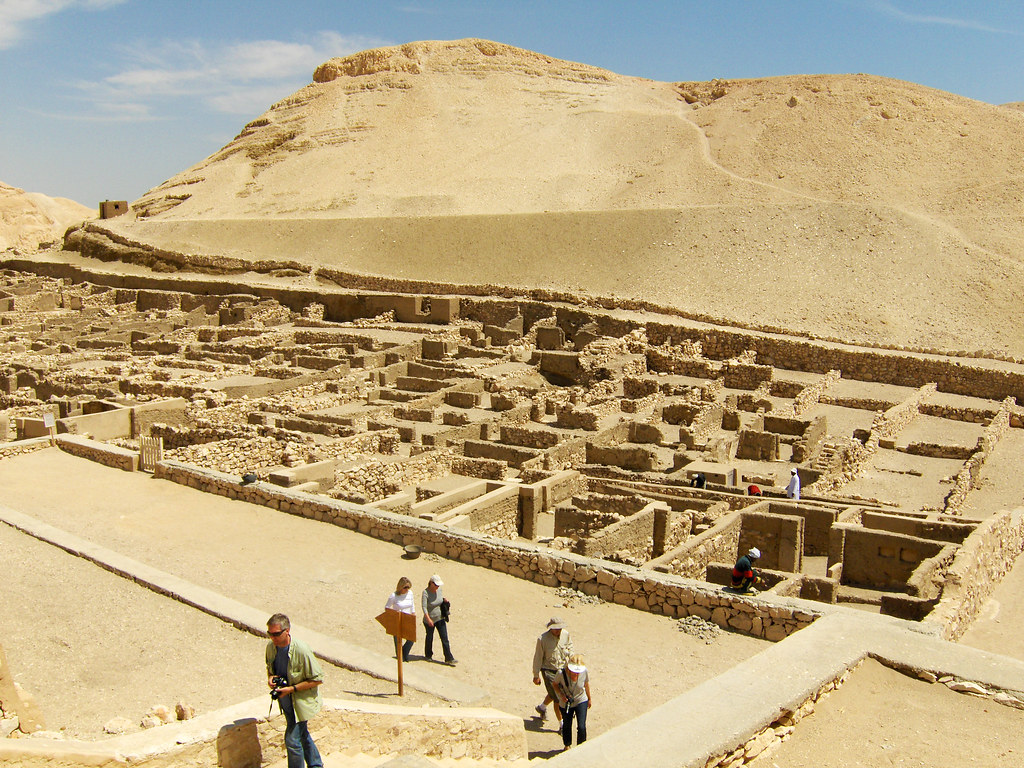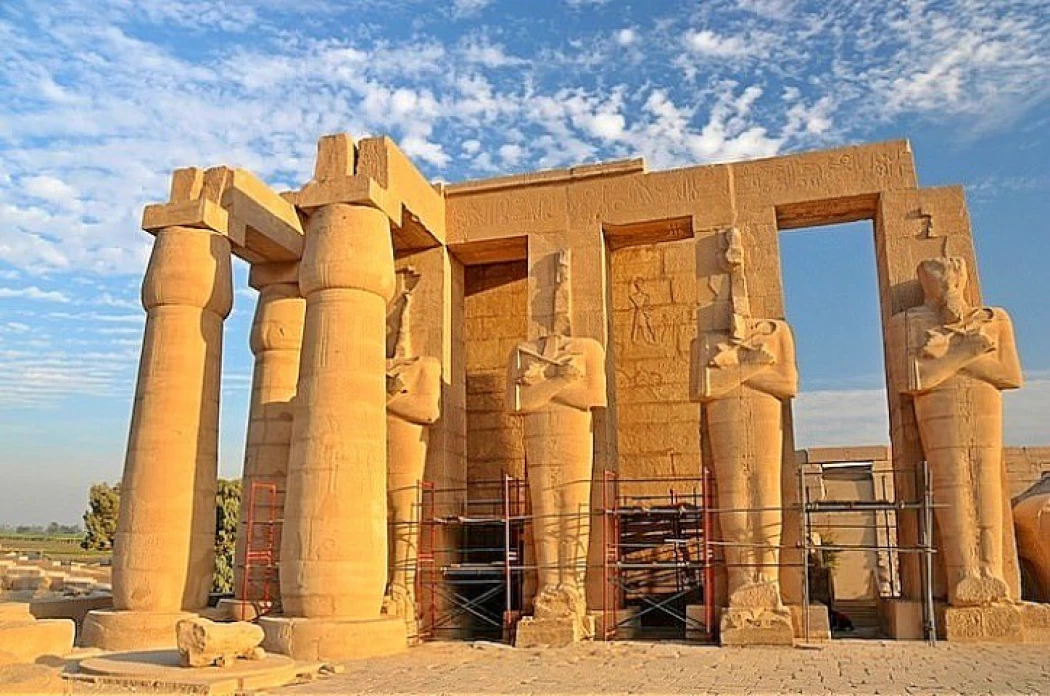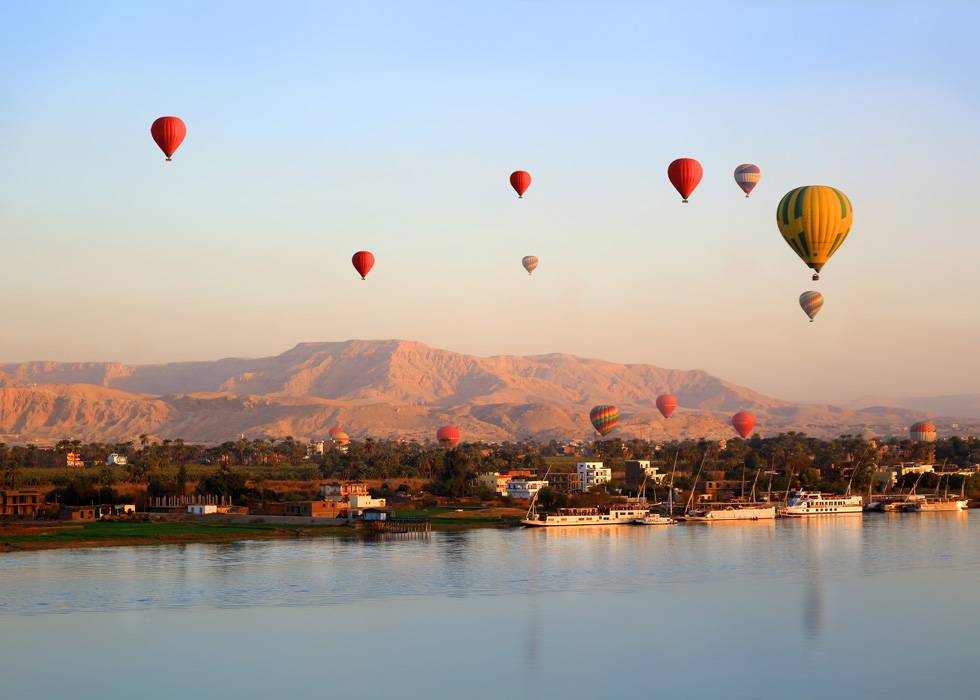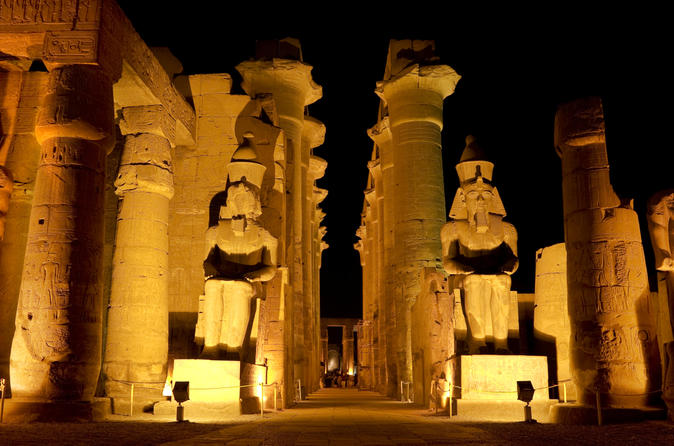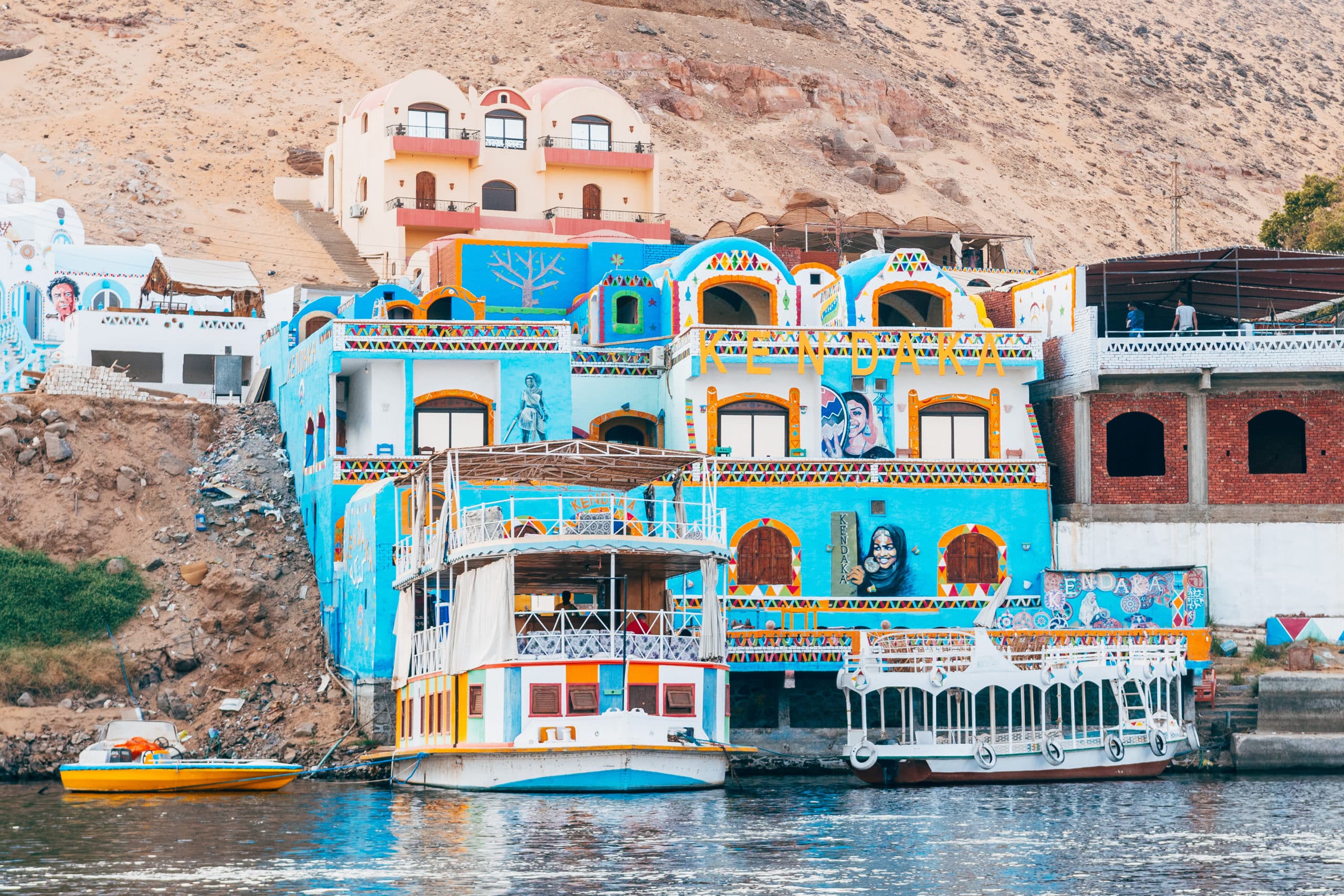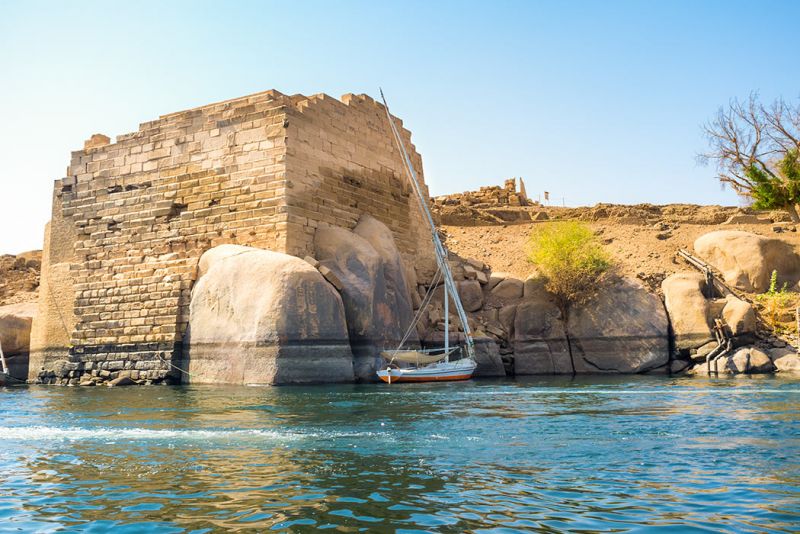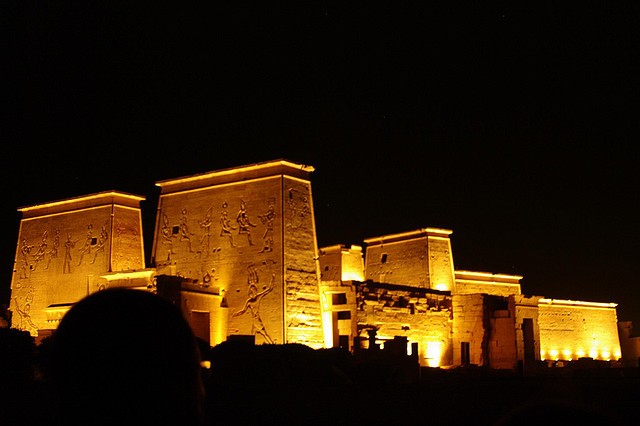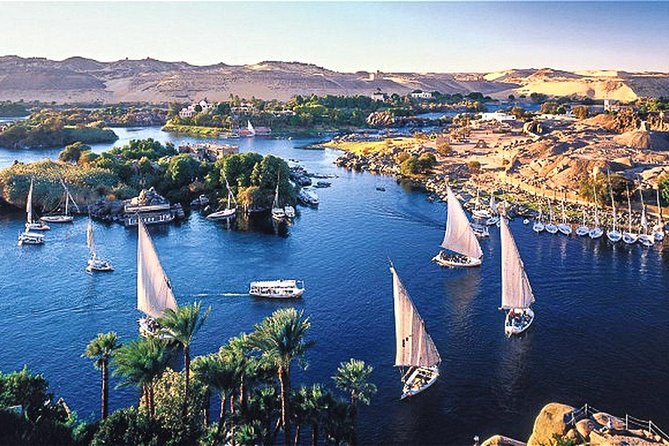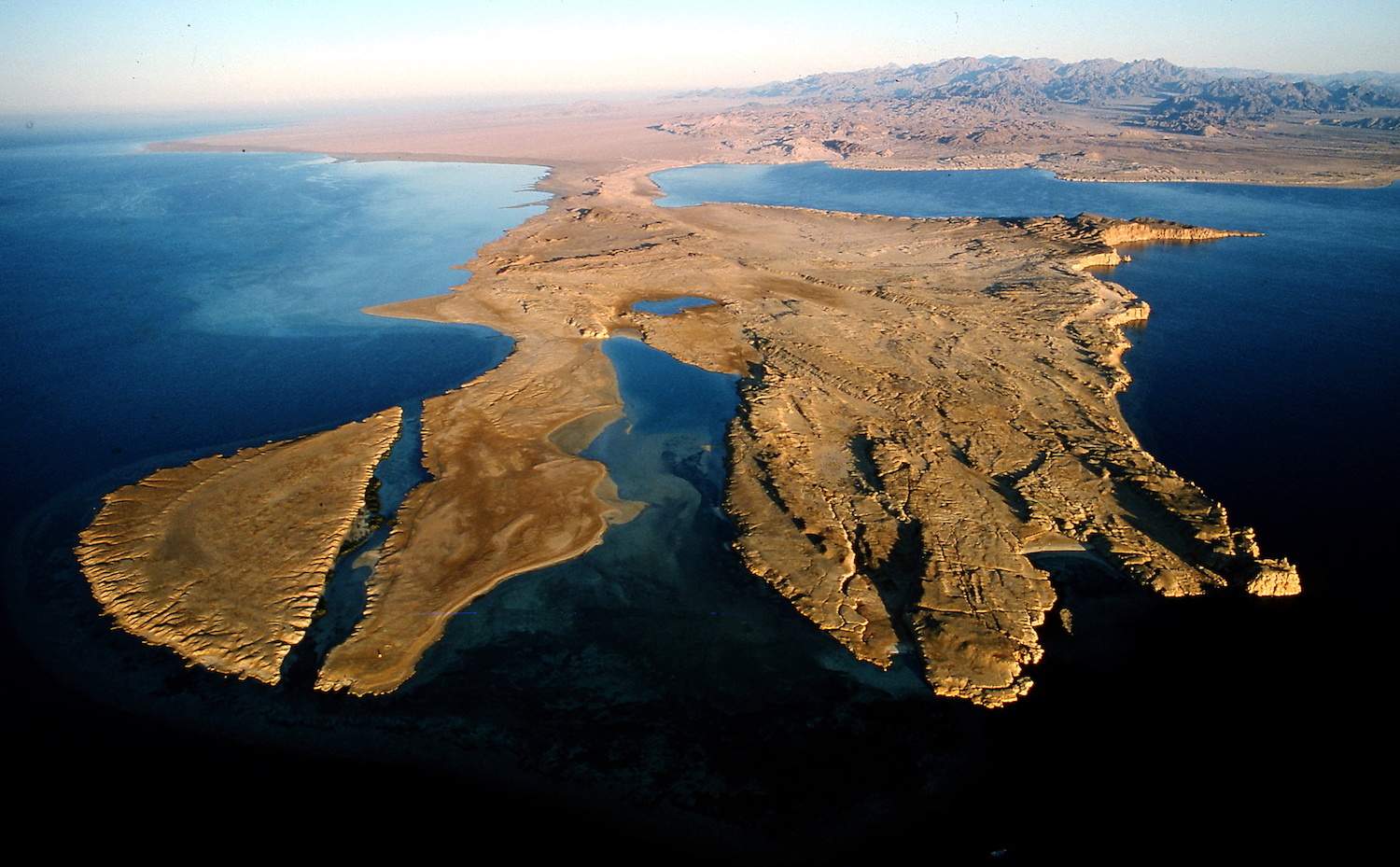Tours & Travels
CAIRO
Cairo, Egypt’s sprawling capital, is set on the Nile River. At its heart is Tahrir Square and the vast Egyptian Museum, Nearby, Giza is the site of the iconic pyramids and Great Sphinx, dating to the 26th century BC. In Gezira Island’s leafy Zamalek district, 187m Cairo Tower affords panoramic city views.

Visit the Pyramids, the only present-day survivors of the Seven Wonders of the Ancient World, built as giant tombs for the mummies of the pharaohs Khufu, Khafre and Menkaure. Then view the enigmatic Sphinx with its lion’s body and man’s head, who guards the necropolis.
Sakkara You’ll see the first pyramid ever built, the famous Step Pyramid of King Zoser, at Sakkara, the ancient cemetery where pyramids were first built as tombs for royalty.
Dahshur See a royal cemetery from ancient times at Dahshour and view the unusual “Bent Pyramid” with curving sides and “Red Pyramid” made of reddish limestone.
The GEM will also host permanent exhibition galleries, temporary exhibitions, special exhibitions, children museum, and virtual and large format screens with a total floor area of 32,000 m2.
Islamic & Khan El Khalili Bazzar
Your tour of Islamic Cairo starts at the Citadel, the medieval fortress built by Salah El Din (Saladin), and there you will view the 19th century Mohamed Ali Mosque, built in Turkish imperial style. Nearby, see the grand, soaring Mosque of Sultan Hassan (1363), one of the finest in Egypt and the much newer Refaie Mosque (1912) which holds important tombs, including that of Egypt’s last royal family. Finish your tour with a shopping trip to Cairo’s historic bazaar, Khan El Khalili, where you’ll wander alleyways admiring Egyptian handicrafts.
Coptic Churches
Visit an early Coptic church dedicated to two saints, Sergius and Bacchus, which tradition says is built over a place where Mary, Joseph and the infant Jesus rested in Egypt.
The basilica-style Hanging Church, probably dating to the 7th century, sits “suspended” on top of the Fortress of Babylon in Old Cairo.
ALEXANDRIA
Known as “The Pearl of the Mediterranean,” this northern Egyptian city founded by Alexander the Great has always enjoyed an illustrious history and a cosmopolitan spirit that captures travellers

Roman Amphitheater
Imagine the crowds of antiquity cheering at a musical performance or a wrestling match at this Roman amphitheater, the only one of its kind in Egypt. With room for 800 spectators on white marble seats, the acoustics are such that if you stand on the stage and whisper, a person in the back row should be able to hear you.
The only one of its kind in Egypt, this Roman amphitheater with its white marble seats is thought to have hosted musical performances and wrestling matches in ancient times.
Catacombs of Kom El Shukafa
The largest Roman burial site in Egypt is the final resting place for 300 individuals, whose tombs are cut into the bedrock in massive tiers, descending 35 meters into the ground. There is even a banquet hall where grieving relatives paid their last respects at a funeral feast. The artisans who built the tombs in the 2nd century AD combined ancient Egyptian and Greco-Roman motifs in a fascinating style.
Alexandria National Museum
From papyrus scrolls to mummy cases and classical Greek statues, view Egypt’s long history with pieces from all of the country’s eras: Pharaonic, Greek, Roman, Coptic, Islamic and modern. The collection is housed in a 1928 palace that was built in Italian modern style.
View pieces from all the eras of Egypt’s history, Pharaonic to modern, in this collection housed in a 1928 palace.
Alexandria Library and Museum
This modern, disk-shaped building inclining towards the sea is built on the believed site of the Great Library of Alexandria, a seat of ancient learning which unfortunately burned to the ground in the 4th century AD. The new research library carries on that legacy of learning by including exhibition spaces, a planetarium and a conference center.
The Corniche
This wide avenue along the Mediterranean coast where couples and families stroll captures the spirit of Alexandria. Many main landmarks of the city can be seen from the Corniche, from the new Alexandria Library to Qait Bay Fort.
Take a stroll or drive on this wide avenue along the Mediterranean, which captures the spirit of Alexandria.
Royal Jewelry Museum
Admire jewelry and decorative objects like a jewel-inlaid chess board once owned by the family that ruled Egypt for 150 years until the 1952 Revolution. They are tastefully displayed in a 1919 palace that belonged to Princess Fatima Al-Zahraa. With stained glass windows and pictures of the royal family, the palace is a charming setting for the collection.
Admire the jewels and decorative objects once owned by Egypt’s last royal family in a collection housed in the 1919 palace that belonged to Princess Fatima Al-Zahraa.
Pompey's Pillar
All that remains of the Serapium (Temple of Serapis, bull god) is this 25 meter pillar made of pink granite from Aswan. The rest was leveled once the Roman Empire adopted Christianity. Although the pillar was erroneously named after Pompey by Crusaders of the Middle Ages, it actually dates from the time of Diocletian.
All that remains of the Serapeum (Temple of Serapis, bull god) is this 25-meter pillar, the rest having been revelled once the Roman Empire adopted Christianity.
Mediterranean & El Alamein
Visit the famous World War II battlegrounds of El Alamein, 105 kilometers west of Alexandria, where Allied forces halted the German Afrika Korps, saving the Middle East from the Axis powers. Winston Churchill wrote of the decisive 1942 battle, “Before Alamein we never had a victory. After Alamein we never had a defeat.” See uniforms, weaponry and maps of the North Africa campaign at the Military Museum, and make a moving visit to the nearby graves of 11,000 soldiers who died in the battle. At the British war cemetery, neat rows of headstones rise from the desert, some marked simply with “Known Unto God.” Italian, German, and Greek war cemeteries are nearby.
The famous site 105 kilometres west of Alexandria is where the Allies defeated the Axis powers in a decisive battle of World War II. Visit the Military Museum and the war cemeteries where the 11,000 soldiers who died in the battle are buried.
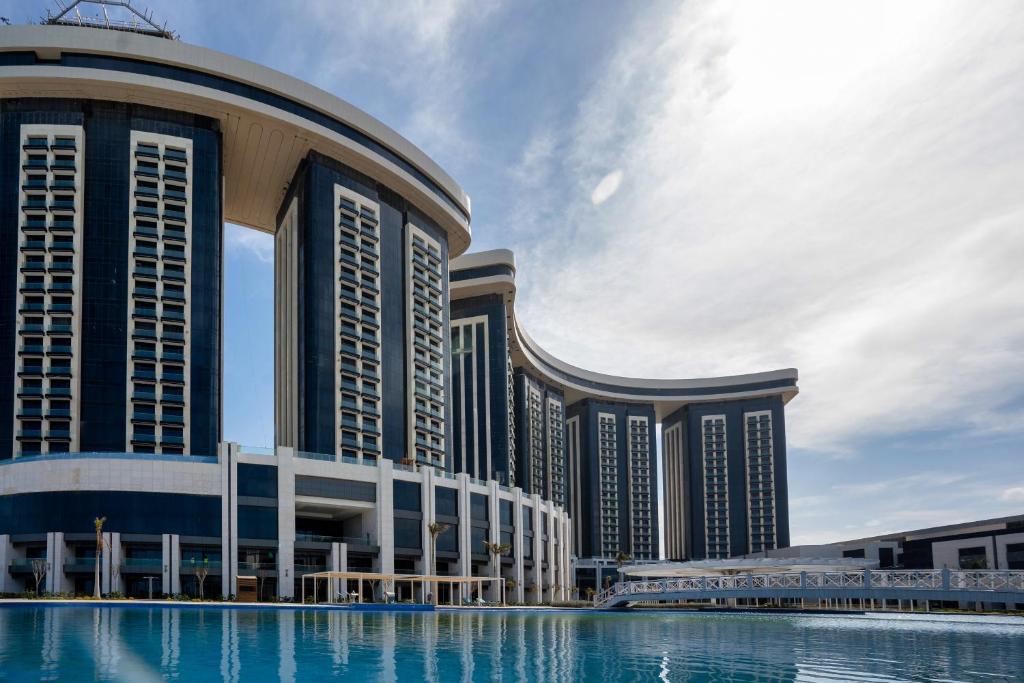
Luxor
Is a city on the east bank of the Nile River in southern Egypt. It's on the site of ancient Thebes, the pharaohs’ capital at the height of their power, during the 16th–11th centuries B.C. Today's city surrounds 2 huge, surviving ancient monuments: graceful Luxor Temple and Karnak Temple, a mile north. The royal tombs of the Valley of the Kings and the Valley of the Queens are on the river’s west bank.


Karnak Temple
Built over 2,000 years by generations of pharaohs, the 62-acre Temple of Karnak was dedicated to the god Amun. It would take days to explore all of the pylons, obelisks and smaller temples within. The great “Hypostyle Hall” alone is a veritable forest of giant pillars rising 23 meters toward the sky. At the “Sacred Lake,” priests purified themselves in the waters before performing rites at the temple. At the height of its glory, Karnak Temple collected annual tribute from over 65 cities in the region.
Luxor Temple
All that remains of the Serapium (Temple of Serapis, bull god) is this 25 meter pillar made of pink granite from Aswan. The rest was leveled once the Roman Empire adopted Christianity. Although the pillar was erroneously named after Pompey by Crusaders of the Middle Ages, it actually dates from the time of Diocletian.
All that remains of the Serapeum (Temple of Serapis, bull god) is this 25-meter pillar, the rest having been revelled once the Roman Empire adopted Christianity.
Valley of the Kings and Queens
The ancient Egyptians stopped building pyramids as royal tombs after robbers stole all the treasures inside, and instead they started burying their royalty in secret tombs at Thebes, today’s West Bank of Luxor. Go there to explore the Valley of the Kings, where New Kingdom pharaohs were buried in hidden tombs which have maintained their richly painted hues and were filled with treasures for use in the afterlife. Then visit the Valley of the Queens, where the pharaohs’ wives and children were buried.
Tomb of King Tutankhamun
At the Valley of the Kings, retrace the steps of Howard Carter and Lord Carnarvon and enter the small tomb of the famed boy-king Tutankhamun, where you will see scenes from the Egyptian “Book of the Dead” on his burial chamber walls. For centuries the entrance was hidden by debris, safeguarding its discovery until 1922. Although Tutankhamun was not an important pharaoh, the unprecedented treasures found inside ensured his place in history. Tut’s treasures are now in the Egyptian Museum in Cairo.Retrace the steps of Howard Carter and enter the tomb of the boy-king Tutankhamun, opened in 1922. Tut’s treasures are now in the Egyptian Museum in Cairo.
Special opening of Tomb of Seti I
Gain special entry to the tomb of the pharaoh Seti I, which made international headlines when it was discovered in 1817 and is one of the most important royal tombs. It is the most completely finished tomb in the Valley of the Kings and the first that had decorations covering every passage and chamber. The refined and colorful relief work set the standard for all the tombs that came after it.
Gain special entry to the tomb of Seti I, the most completely finished tomb in the Valley of the Kings. The refined relief work set the standard for all the tombs after it
Special Opening of the Tomb of Nefertari
At the Valley of the Queens, the highlight is visiting the beautiful tomb of Queen Nefertari, Ramses II’s beloved wife. It’s said to be the finest tomb you can see in Egypt, with vividly colored relief work and a ceiling painted with stars, giving an idea of how other, now faded tombs would have looked in their day. The 6 million dollar restoration of the tomb was led by the Getty Institute.
Visit the beautiful tomb of Queen Nefertari, Ramses II’s beloved wife. Restored for 6 million dollars, it is said to be the finest in Egypt, with vividly colored tomb art.
Workers’ Village at Deir El Medina
Visit the remains of the self-contained village on the West Bank where the workmen who built the kings’ and queens’ tombs lived in mud brick houses with their families. The site gives archeologists a view of how urban people lived in ancient Egypt. You can also visit the tombs that the workmen created for themselves, to admire the art in ordinary people’s tombs. Nearby is the Temple of Deir El Medina, from Ptolemaic times.
Visit the remains of the village where the workmen who built kings’ and queens’ tombs lived, and see the tombs where the workers themselves were buried.
Ramesseum
The Ramesseum, the Mortuary Temple of Ramses II, was built early in the great pharaoh’s reign and was 20 years in the making. Here you’ll see the broken, awesome Colossus of Ramses II, a 1000 ton statue in which the fingers alone are over 1 meter long; it inspired the famous poem “Ozymandias” by Percy Bysshe Shelley. This great temple reportedly rivaled the wonders of Ramses II’s temple at Abu Simbel. At the Mortuary Temple of Ramses II, you’ll see the broken, awesome Colossus of Ramses II, a 1000 ton statue that inspired Shelley’s poem, “Ozymandias”.
Medinet Habu and the Temple of Ramses III
The magnificent Medinet Habu is a series of temples built by the Pharaoh Ramses III (1182-1151 BC) and second only to Karnak Temple in size and complexity. The most impressive is the Mortuary Temple of Ramses III, decorated with relief work depicting his many military victories. With its massive mud brick enclosure that held storehouses, workshops, administrative offices, and residences of priests and officials, Medinet Habu grew into a city that maintained its population well into Coptic times.
Hatshepsut Temple
The Mortuary Temple of Queen Hatshepsut, ancient Egypt’s only female pharaoh, rises out of the desert in a series of brilliant white terraces set against limestone cliffs. The temple was an important religious and funerary site, dedicated to the cults of Hathor, the cow goddess of beauty and love, and Anubis, god of the dead and mummification. After Hatshepsut’s death, her jealous stepson and successor Tuthmosis III defaced her temple images in an attempt to erase her memory forever.
Hot Air Balloon
Get a spectacular bird’s eye view of Luxor’s ancient monuments and modern villages from the vantage point of a hot air balloon. This is a unique way to see the city’s main sites and natural beauty as you’ll never see it from the ground. Get a unique bird’s eye view of Luxor’s monuments and villages from a hot air balloon.
Sound and Light, Karnak Temple
In the evening, attend the Sound and Light Show at Karnak Temple, a fascinating walking tour through the history of the world’s largest-ever temple complex, narrated by the voices of the pharaohs. Shadows play off the enormous columns in the grand Hypostyle Hall, creating a mysterious effect.
Aswan
Aswan, a southern Egyptian city, offers a blend of African and Middle Eastern vibes. Enjoy Nile views, stroll along the riverfront, shop at the souq, and watch the sunset from the Old Cataract Hotel. Experience Nubian culture through dance performances at the cultural center.
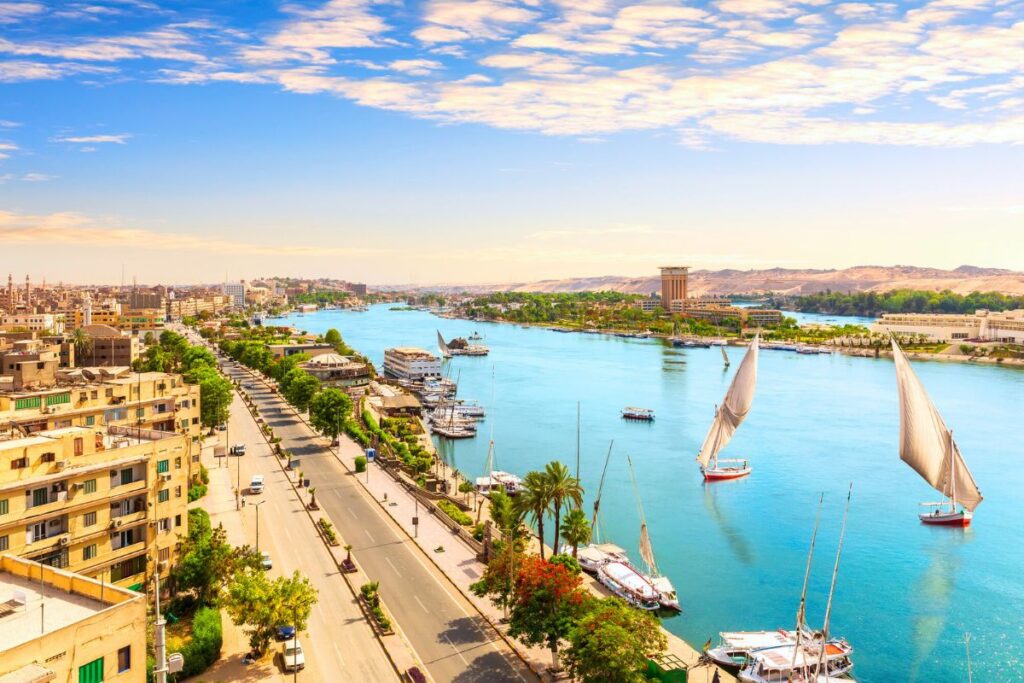
Philae Temple
According to the Ancient Egyptians, the goddess Isis traveled all over Egypt gathering her husband Osiris’s remains after he was cut to pieces by his evil brother. On Philae Island, where she found his heart, the Egyptians built a sacred temple to Isis, goddess of purity, sexuality, nature and protection. During the building of the High Dam, Philae Island was submerged by water, so UNESCO helped transport the temple complex to nearby Agilkia Island, where you see it today.
Visit this temple complex dedicated to the cult of Isis, ancient Egyptian goddess of purity, sexuality, nature and protection.
Unfinished Obelisk
Take a behind-the-scenes look at how the ancient Egyptians built their monuments by visiting this massive obelisk in Aswan’s Northern Quarry. At 2.3 million pounds, the obelisk would have been one of the largest pieces of stone ever handled, but while it was being carved from the red granite of Aswan (used in many ancient Egyptian monuments), a crack was found and the obelisk was abandoned. Tools that the builders left behind give great insight into how they accomplished such work. Take a look at how ancient Egyptians built their monuments by visiting this massive obelisk, which was abandoned in Aswan’s Northern Quarry when a crack was found as it was being carved from the red granite. Tools left behind show how builders accomplished such work.
Nubian Villages
With the construction of the Aswan High Dam, 100,000 Nubians were displaced, many settling in Aswan, where you can still learn about their culture. Visit Nubian villages on Elephantine Island by taking a ferry or a sailboat. You will find friendly residents and brightly painted homes, often adorned with drawings proudly declaring the owner’s pilgrimage to Mecca.
Learn about Nubian culture by taking a ferry or sailboat to the Nubian villages on Elephantine Island where you will find friendly residents and brightly painted homes.
Elephantine Island
At the boundary between Egypt and Nubia, Aswan’s largest island was the site of an ancient trading post and fortress. Artifacts found here are some of the oldest in Egypt, dating to pre-dynastic times. An attraction for today’s visitors is the Nilometer, one of only three in the country, used until the 19th century to measure the water level of the Nile. The island gets its name from the ivory that was traded here or from the boulders in the Nile off its shores, which resemble the backs of bathing elephants.
High Dam
An engineering feat completed in 1971, the Aswan High Dam provides electricity and irrigation for all of Egypt, saving the country from droughts and Nile floods that plague the rest of Africa. The Soviet-designed dam is two miles long and contains 18 times the material used in the Great Pyramid of Cheops. From the top you can see Lake Nasser, the 500-mile-long reservoir created when the dam was built, which flooded all of lower Nubia and displaced thousands of Nubians and Sudanese.
Built in 1971, the two-mile-long High Dam provides electricity and irrigation for all of Egypt, saving the country from droughts and floods.
Felucca sailing around Elephantine Island
The traditional sailboats of Egypt have graced the Nile since the time of the Pharaohs and are a relaxing way to take in Aswan. With no engine, feluccas rely on the breeze to carry them along, and Egypt is blessed with southerly winds that push the sailboats upriver, allowing them to return on the downstream current. Sail around Elephantine Island and Kitchener’s Island with its lovely botanical gardens planted by a former British Consul General with a passion for flowers.
View Aswan’s lovely green islands from the Nile by taking a relaxing ride in a felucca, the traditional sailboat of Egypt since the time of the Pharaohs.
Abu Simbel
is a historic temple comprising two massive rock-cut temples in the village of Abu Simbel Aswan Governorate, Upper Egypt, near the border with Sudan. It is located on the western bank of Lake Nasser, about 230 km (140 mi) southwest of Aswan (about 300 km (190 mi) by road). The twin temples were originally carved out of the mountainside in the 13th century BC, during the 19th Dynasty reign of the Pharaoh Ramesses II. Their huge external rock relief figures of Ramesses II have become iconic. His wife, Nefertari, and children can be seen in smaller figures by his feet. Sculptures inside the Great Temple commemorate Ramesses II's heroic leadership at the Battle of Kadesh

Sinai
Sinai has a varying landscape of valleys, canyons, and mountains, with occasional water springs and oases. Historically, it has been a land of transit for armies, refugees, and pilgrims. The Bedouins, traditionally nomadic herders, have recently settled due to tourism. Explore Sinai's landscape by 4x4 jeeps to the Colored Canyon, named for its varied mineral tones in the sandstone. After the canyon, visit Wadi Gunai El Rayan to experience its serene landscape and enjoy lunch there.

Sharm El-Sheikh
Is an Egyptian resort town between the desert of the Sinai Peninsula and the Red Sea. It's known for its sheltered sandy beaches, clear waters and coral reefs. Naama Bay, with a palm tree-lined promenade, is filled with bars and restaurants. Ras Muhammad National Park is a major diving destination, with marine life around the Shark and Yolanda reefs and the Thistlegorm wreck.

RAS MOHAMED
The peninsula of Ras Mohamed is located at the southernmost tip of Sinai, about 20 kilometers from Sharm El Sheikh. In 1983, this whole area was declared a National Park, as part of the government’s programme to preserve the coral reef structure off Sinai’s coastline. The protected area’s boundaries grew over the years and now extend over an area of 480 square kilometers embracing the islands of Tiran and Sanafir as well as the coral reef around Sharm El Sheikh.
The park also comprises and protects the inland areas characterized by unusual ecosystems such as the coastal dunes and the mangrove swamps.
WHITE CANYON & EIN KHUDRA OASIS
The history of the Sinai is one of transit; of armies marching through, of people in flight, of pilgrims traveling to Mecca and of crusaders. The only constant inhabitants of this harsh and arid terrain over the years have been the “Bedouins”, traditionally nomadic herders, who have in recent years, started settling down as the influx of tourism has provided them with alternative means of making a living.
FISHING & SNORKELING TRIP
Enjoy a full day of fishing and snorkeling while cruising the red sea on a private boat (size varies between 18m to 25m). The boat is equipped with fishing rods, fishing lines and trolling machines.
Enjoy the wonderful view of the Red Sea and the Sinai mountains. You will be trying your luck at trolling for Tuna or Barracuda upon arriving at the main fishing point and hopefully you’ll be eating your catch of the day at lunch. Snorkeling stops are available upon request throughout the day.
Hurghada
Was founded in the early 20th century. For many decades it was a small fishing village, but it has grown into a major Red Sea resort as a result of Egyptian and foreign investment that began in the 1980s. Holiday resorts and hotels provide facilities for windsurfing, kitesurfing, yachting, scuba diving and snorkeling. The city is known for its watersports, nightlife and warm weather.

Oasis
Discover with us the natural beauty of Siwa as a tourist place in the first position. Siwa Oasis is one of the most beautiful Egyptian oases located in the heart of the desert that did not reveal all its secrets so far, and when you visit the unique oasis, which is more than 900 kilometers from Cairo, you discover the new every time as if you are visiting it for the first time. A beautiful green lake sits among this ocean of yellow sand, but Siwa has more than just breathtaking sceneries, it carries a culture of its own; local habitants of Siwa actually speaks their own language, which is more like the language spoken by the Berber (desert people from further west), than the Egyptian Arabic spoken in the rest of Egypt. Siwa Oasis is famous for its salt pools that won't allow you to drown.

Bahariya Oasis
Bahariya Oasis, located in the western part of Egypt about 370 kilometers southwest of Cairo, is surrounded by black desert hills and includes several smaller villages. Key attractions include the White Desert with its surreal chalky rock formations, the Black Desert characterized by volcanic hills, Crystal Mountain known for its quartz formations, and the Valley of the Golden Mummies, an archaeological site from Greco-Roman times. Visitors can enjoy desert safaris, camping, and exploring geological and historical sites. The oasis, rich in ancient history and trade routes, is accessible by road from Cairo.


